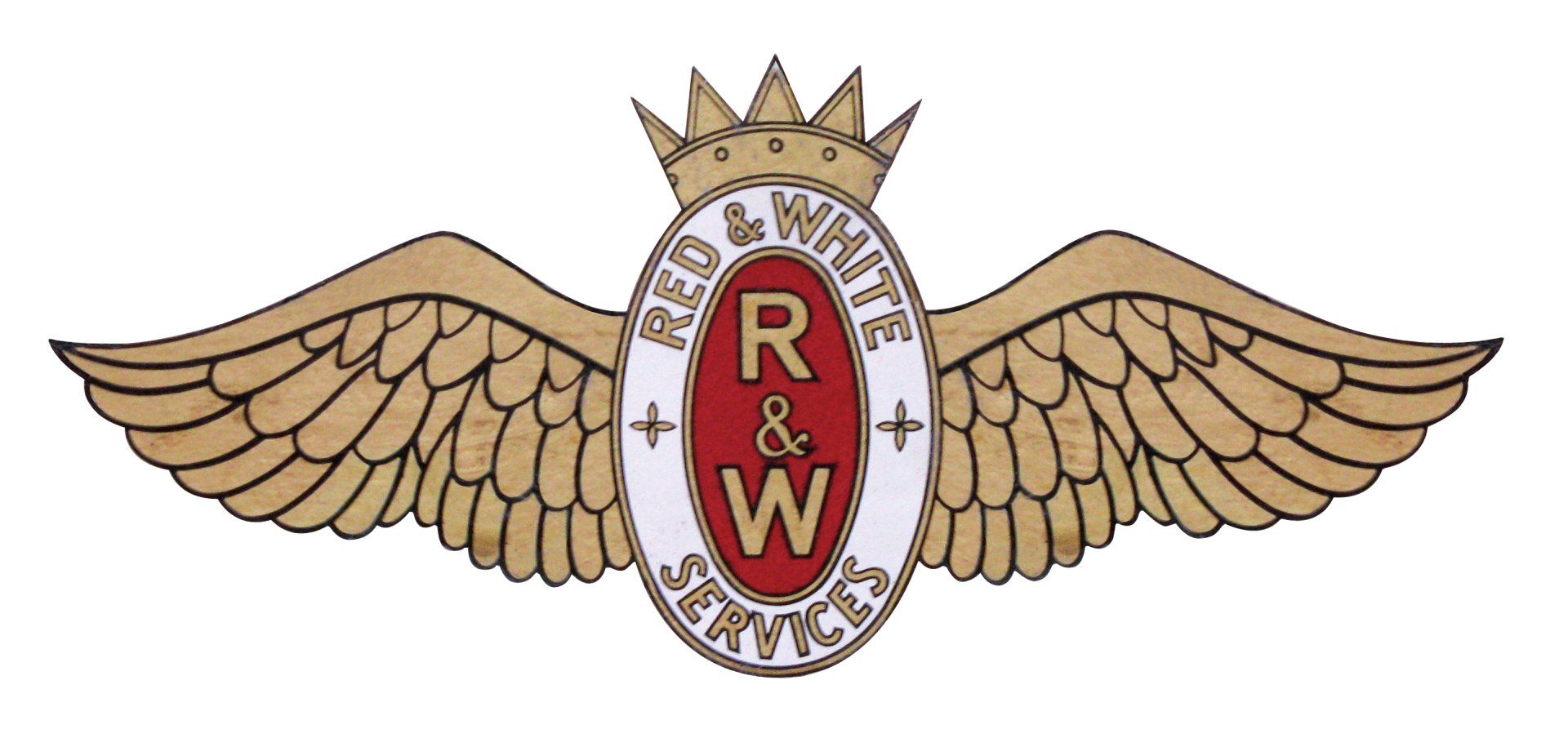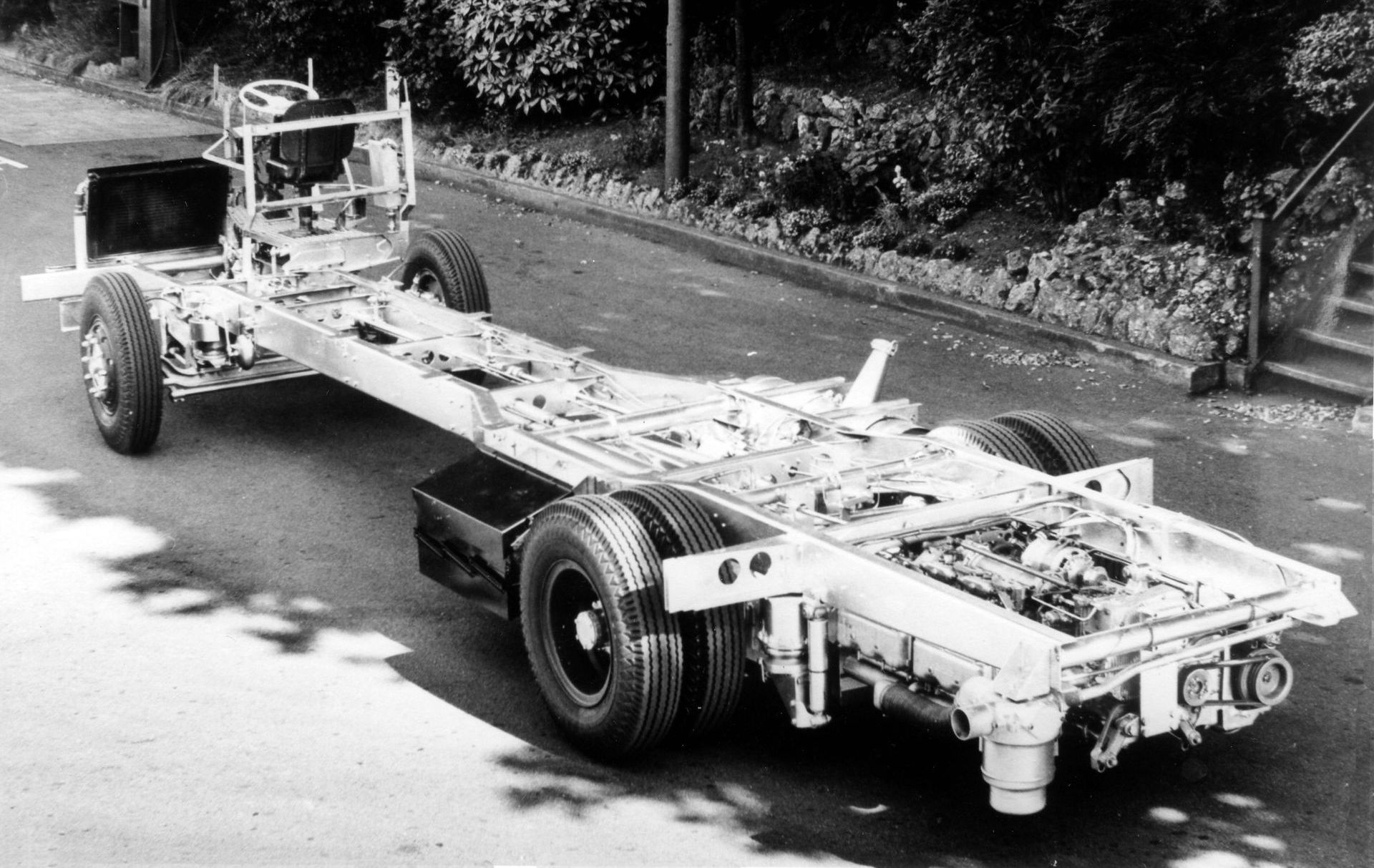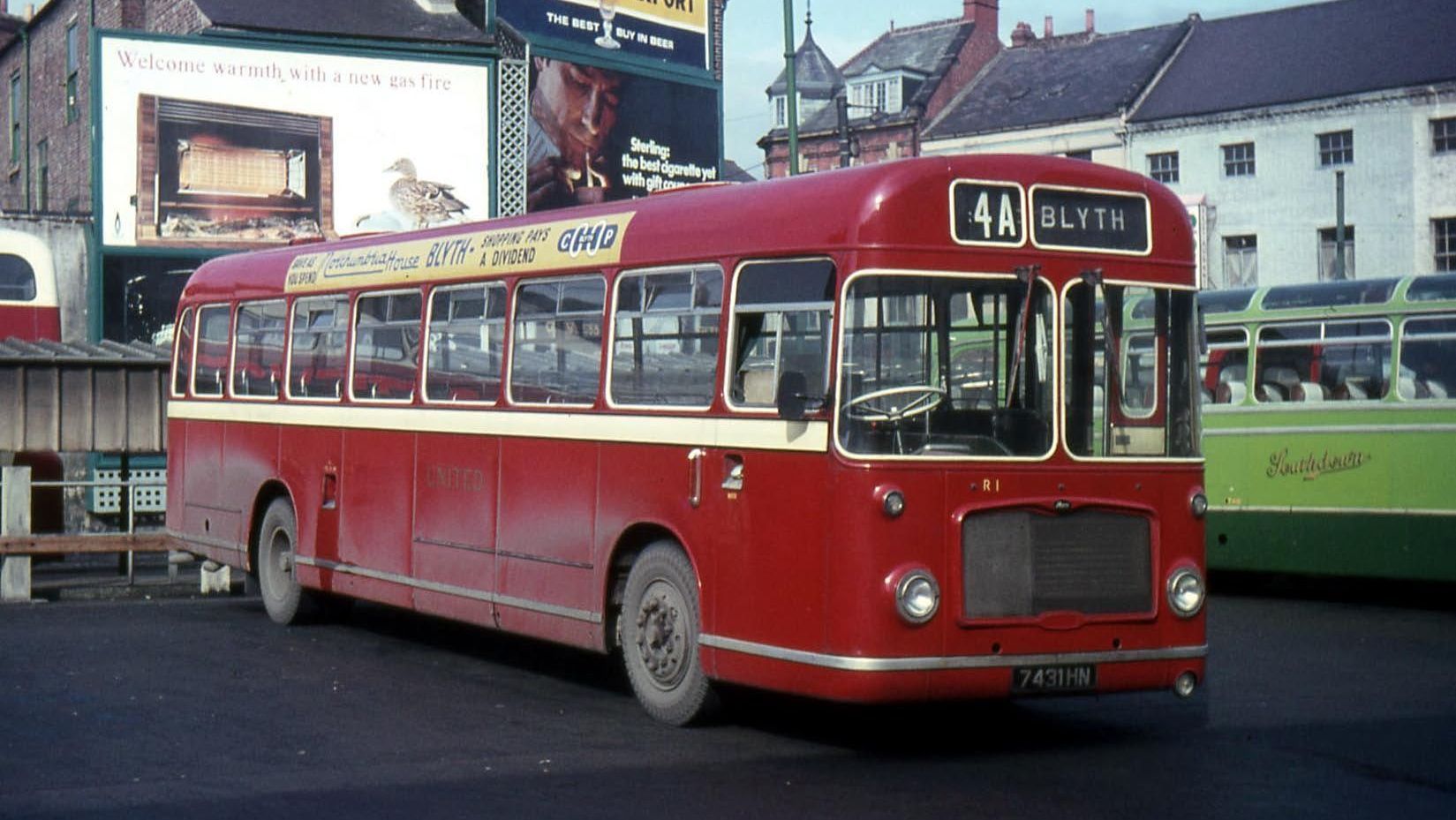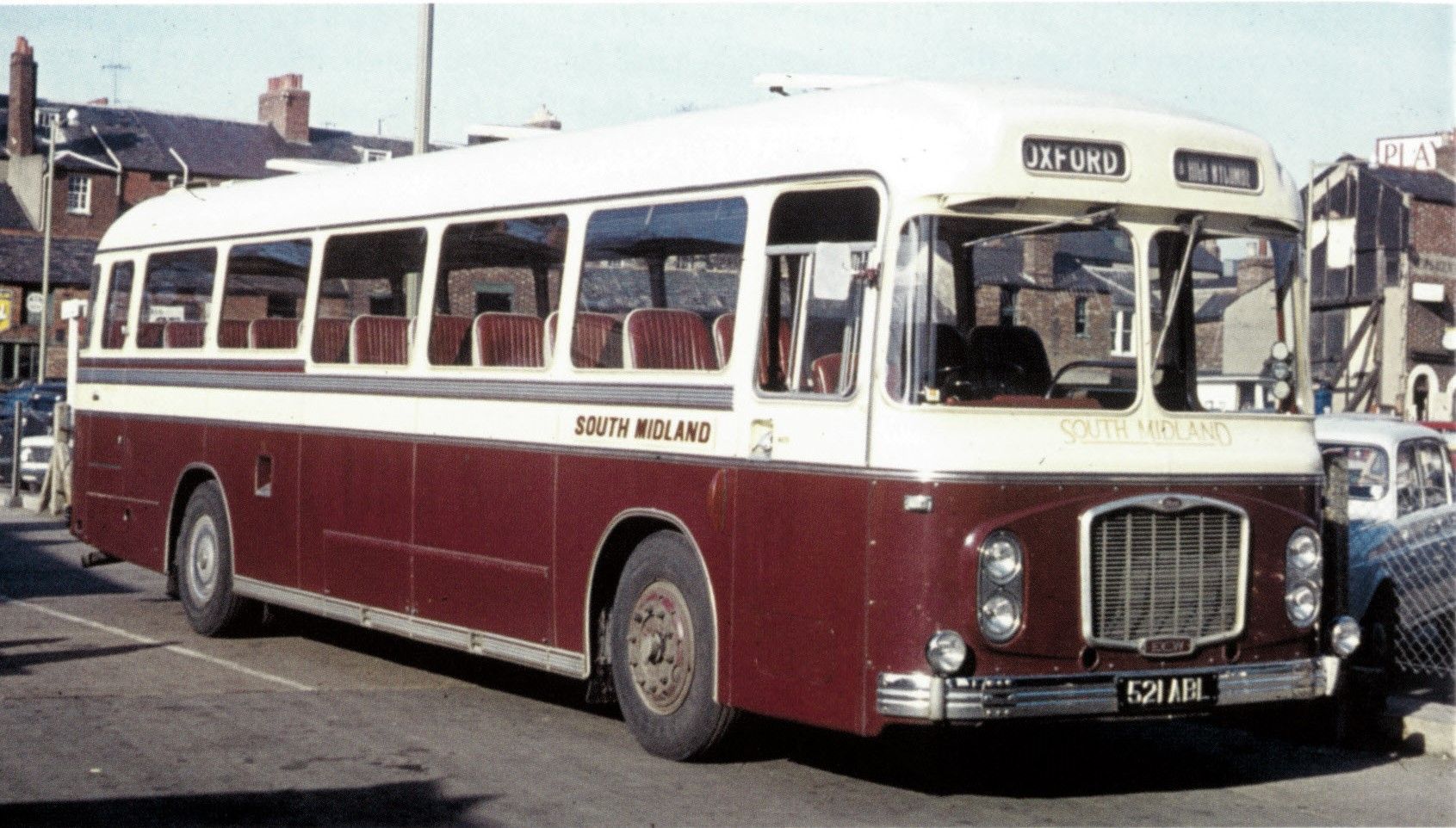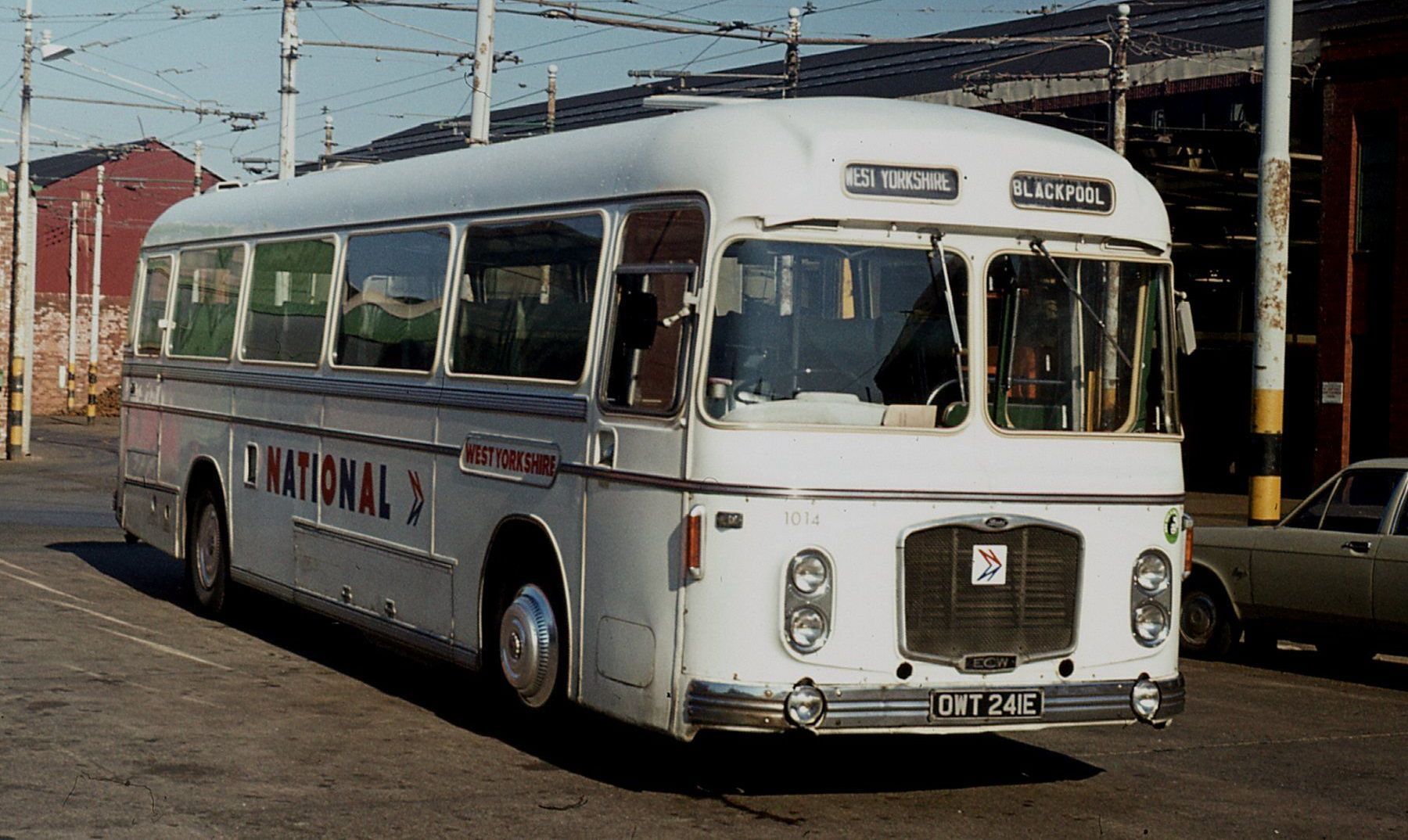
The BRISTOL RE was the first of a new generation of Rear Engine single deck bus & coach chassis designed by Bristol Commercial Vehicles. In 1961 revised Construction & Use Regulations for commercial vehicles permitted 36-foot long buses & coaches for the first time in the UK. The RE became one of the first of this longer type.
By 1960 Britain’s bus operators were suffering a drop in passenger numbers (due to rising car ownership and changes in peoples lifestyle). Bus companies wanted single deck buses with a higher seating capacity, which also offered the potential for One-Man-Operation.
With the engine at the rear, the floor of the
RE bus sloped gently down towards the front. This meant there were fewer and shallower entrance steps. This made it easier & quicker for passengers to get on & off.
Chassis Sizes
RE chassis were built in three lengths & two heights:
- RESL: Short 32ft, Low 2ft 5inch bus;
- RESH: Short 32ft, High 2ft 8inch coach;
- RELL: Long 36ft, Low 2ft 5inch bus;
- RELH: Long 36ft, High 2ft 8inch coach;
- REMH: Max 40ft, High 2ft 8inch coach.
The
RE became the forerunner of today’s low-floor buses – with a Rear Engine & drop-centre rear axle.
RE chassis were made in two parts:
- Rear part
(with gearbox, rear axle & engine) was standard to all types;
- Front/central section differed in length & also height. The two parts were bolted together ahead of the gearbox.
Bus chassis had outriggers to assist the coachbuilder obtain a low floor. Coach chassis didn't, to permit side luggage lockers.
Design Features
The Bristol RE was a successful, reliable & robust chassis. Its success was mainly due to three features:
- the gearbox is located in-front of the rear axle;
- the drive shaft from the engine runs over a drop-centre rear axle into the gearbox. See illustration.
- the engine radiator is at the front, to take advantage of natural air flow. So, they don’t need a radiator fan.
These three design features improved weight distribution & therefore road-handling.
Until 1967 the Series 1 RE had a Gardner engine; manual gearbox; air suspension & air-over-hydraulic service brakes.
From 1967 the Series 2 RE was improved to make the chassis appeal to municipal & private operators. The changes were:
- Leyland engines O.600 or O.680 were offered;
- Self-Changing Gears semi-automatic gearbox became standard;
- full air brakes became standard (parking brake manual);
- leaf springs became the norm (air suspension became an optional extra).
The last RE was built for a British mainland operator in 1975.
RE chassis production continued until May 1983, but only for export to Northern Ireland & New Zealand.
4,629 Bristol RE's were built (between 1962 & 1983).
976 were RELH coach chassis. 413 had Eastern Coach Works bodies like Ruby. 24 of these survive.
Our archive shows original documents for Ruby.
The chassis (above) is an RELL with Leyland O.680 engine; semi-automatic gearbox & leaf spring suspension.
Photo credit: Martin S Curtis.
New RELH chassis 1966
This RELH coach chassis has the standard Series 1 specification of: Gardner diesel engine; 5-speed manual gearbox & air suspension.
Note the radiator at the front; battery box (nearside) & fuel tank (offside). The Gearbox is between these two in the chassis centre.
Photos: Bristol Commercial Vehicles.
BRISTOL RE brochure 1966
Component Suppliers
Bristol built most of the RE chassis themselves, in their own foundry & chassis assembly line.
Like all chassis manufacturers, they bought-in some specialist parts.
British companies that supplied parts to Bristol for RE chassis construction:
- Burman – steering boxes.
- Ferodo
- brake linings.
- Gardner
– horizontal diesel engines (6HLX & 6HLXB).
- Hardy Spicer - propeller shafts.
- Leyland - horizontal diesel engines (600 & 680).
- Self-Changing Gears – gearbox components.
- Smiths - electric speedometer, air pressure gauge.
- Westinghouse – air brake components.
Prototypes
In late-1962, early-1963 Bristol Commercial Vehicles produced three prototype RE chassis. Eastern Coach Works bodied them & they became these vehicles.
Prototype RELL: registration 7431 HN.
A 54-seat bus for 'United' of Darlington,
delivered December 1962.
Prototype RELH: registration 521 ABL.
A 47-seat coach for 'South Midland' of Oxford, delivered April 1963.
Photos: 7432 HN from Brian Bennett (flickr); 521 ABL & OWT 241E from flickr.
BRISTOL RELH/ECW mk-1 coaches for each operator
| Operator name: | Based in: | Number new: | Survivors: | Survivors registrations (2025): |
|---|---|---|---|---|
| Bristol Omnibus | Bristol | 39 | 0 | |
| Crosville | Chester | 47 | 6 | AFM105B; HFM573D; AFM103G; AFM106G; AFM111G; EFM163H |
| Eastern Counties | Norwich | 23 | 1 | SVF896G |
| Eastern National | Chelmsford | 25 | 0 | |
| Hants & Dorset | Bournemouth | 2 | 0 | |
| Lincolnshire | Lincoln | 12 | 1 | CVL850D |
| Midland General | Alfreton | 3 | 0 | |
| Red & White | Chepstow | 32 | 1 | SAX1G |
| Southern National | Exeter | 20 | 5 | HDV624E; LDV467F; LDV847F; OTA632G; OTA640G |
| Thames Valley | Reading | 6 | 0 | |
| Tillings | London | 3 | 0 | |
| United | Darlington | 85 | 0 | |
| United Counties | Northampton | 24 | 2 | ABD252B; ABD253B |
| United Welsh | Swansea | 4 | 1 | 375GWN |
| Western National | Exeter | 55 | 6 | 837SUO; OTA645G; RDV419H; RDV423H; RDV428H; RDV433H |
| West Yorkshire | Leeds | 33 | 1 | TWW766F |
| TOTALS: | 413 | 24 |
Pictures of most of the surviving BRISTOL RELH / ECW mk-1 coaches.
Four types of BRISTOL RE lined-up at the North East Bus Festival 2014 at the MetroCentre, Gateshead.
ECU 201E - 1967, RESL mk-1, 2-door bus.
OAX 9F - 1968, RELH mk-1, luxury coach.
THU 354G - 1969, RESL mk-II, 1-door bus.
JAJ 293N - 1974, RELL mk-III, 2-door bus.
All are powered by Leyland engines !
